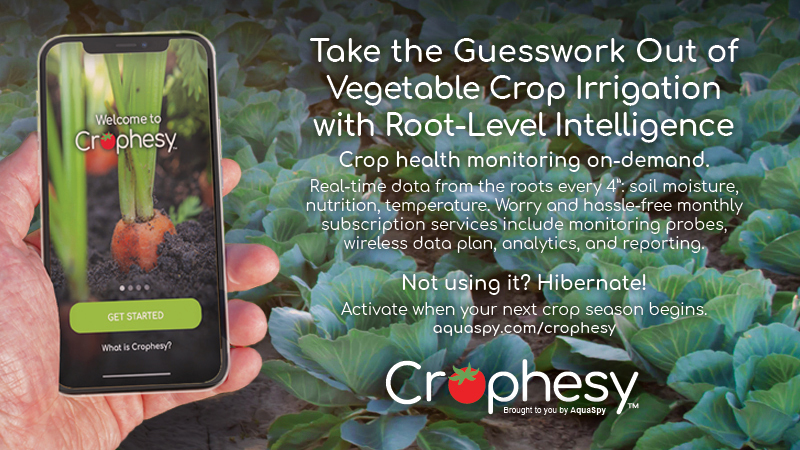AgWeatherNet Provides Sunny Forecast
There’s an old quotation attributed (perhaps wrongly) to Mark Twain: “Everybody talks about the weather, but nobody does anything about it.” That’s not exactly true, at least up in the state of Washington. Thanks to the AgWeatherNet, which went on-line March 1, growers can closely monitor the weather so they can do something — at least in response to it — whether that be getting in a fungicide spray or putting down an acre-inch of water. “Anybody who grows fruit knows the value of weather data,” says Gary Grove, the director of Washington AgWeatherNet.
Washington is rather advanced in the area of weather data, as it has had some sort of system since 1987, when the old Public Agricultural Weather System (PAWS) was launched. PAWS and its successor, PAWS2, have been replaced by AgWeatherNet, which is a more sustainable system in part because last year it secured an $800,000 annual appropriation from the state legislature. The network consists of about 94 weather monitoring stations, or data loggers, mostly located in the agricultural areas of eastern Washington.
Each data logger is equipped with sensors to record temperature, relative humidity, leaf wetness, wind speed and direction, soil temperature, and soil moisture. The information is collected every 15 minutes. Growers can collect the information that often, or hourly, daily — whatever they prefer. That decision would likely depend on the time of year, says Grove. For instance, in the spring when buds might be at risk, tree fruit growers tend to keep a close eye. “During frost season,” he says, “they really love it.”
Quarter-Million Hits
AgWeatherNet currently has about 1,300 subscribers, says Grove, and the Web site, http://weather.wsu.edu, gets about 250,000 hits each month. Grove knows the value of the system first-hand, as he himself farms 3 acres of winegrapes. “Too small to be commercially viable,” he says, before adding with a laugh, “but too much work for a backyard operation.”
Grove utilizes AgWeatherNet to know when to irrigate his vineyard for the first time each year, usually in June. When that first inch of water is gone, he puts down another inch. AgWeatherNet allows him to constantly keep the vines right on the edge of stress, reducing the vigor of the canopy and lessening disease problems, while boosting the quality of the grapes. Grove also uses AgWeatherNet to time his powdery mildew fungicide applications.
Having precise weather data allows growers to make better decisions on frost protection, irrigation, and pest and disease control. It also saves money, notes Grove, as saving on just a fungicide spray or two can really add up. It can also be used in other ways in eastern Washington, where growers sustain hard freezes about every eight years. At about 0°F, winegrape growers can sustain bud kill, so Grove keeps a watchful eye when the temperatures sink into the single digits because it means some buds will be lost and he won’t prune as much. “We use weather data for everything around here,” he says.
Mainly Maintenance
While AgWeatherNet does work well, growers in other parts of the country who are interested in pushing for similar systems need to be aware that the configuration is much more difficult to maintain than to implement. “There’s a lot going on behind the scenes that the average subscriber isn’t aware of,” he says.
For example, the sensors send data via radio to base stations, or repeaters, which then in turn send the information via the Internet to the central database. However, like any other equipment, the repeaters can malfunction. “For instance, what if it goes down and up on the repeater site there is 8 feet of snow?” says Grove. “You can’t just stick them up in an orchard or vineyard for 20 years and expect the data to keep coming in.”
Add in the other problems that can occur when the equipment is accessible to the public — “We’ve had people shoot weather stations,” says Grove —
and it becomes clear just how important maintenance can be. That’s why the money from the state legislature was so vital, as upwards of $500,000 of the appropriation goes for staff salaries. (Grove, incidentally, is a half-time employee. The rest of the time he works at his first love, as a Washington State University plant pathologist.)
However, Grove is hopeful that improved technology will solve a lot of the problems they currently encounter. The Washington Wine Industry Foundation recently awarded a $55,000 grant to study ways to improve the telemetry infrastructure AgWeatherNet currently employs. But that’s just the beginning. “We think the day’s coming when, instead of using repeaters,” says Grove, “we can just let the cellular industry handle it.”









